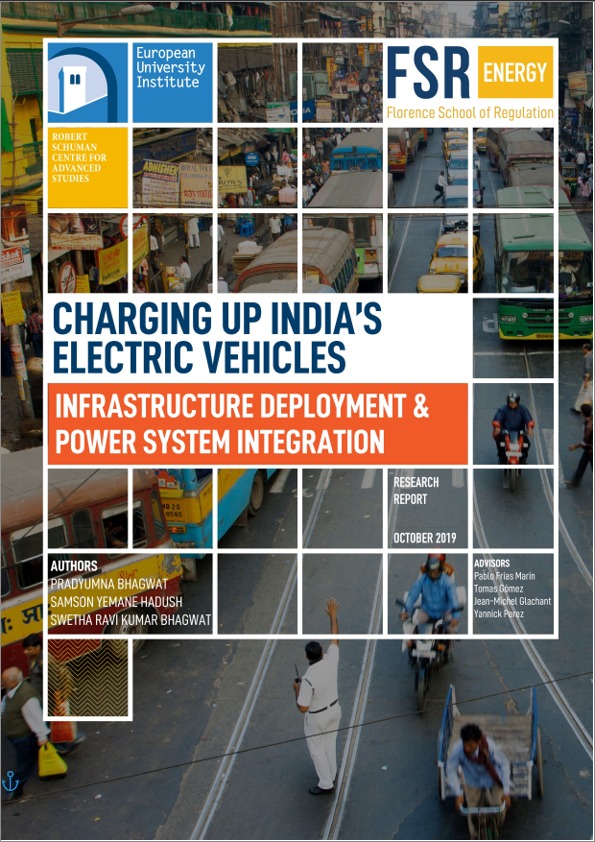Technical Report
Charging up India’s Electric Vehicles: Infrastructure deployment & power system integration
October 2019

India has embarked on an ambitious path towards more sustainable mobility by promoting the electrification of its transport sector. The push for electric vehicles is driven by the global agenda established under the Paris Climate Agreement to reduce carbon emissions, and by the national agenda, which includes improvement of air quality in its urban areas, reduction of dependence on oil imports, and encouragement of the local EV manufacturing sector. The country has set a target of 30% electric vehicle sales across all vehicle types by 2030. To achieve this, NITI Aayog, with the support of select central ministries, has been serving as the nodal agency to develop the electric mobility plan for India.
Although the e-mobility plan is established at central level, the onus is on the state governments, which have to develop policies and regulatory frameworks to enable the adoption of EVs and the deployment of charging infrastructure in their respective states. India has over 250 million vehicles, and this fleet is dominated by 2-wheelers, accounting for 78% of the total vehicles. Currently, EVs represent a minimal share with approximately 750,000 vehicles. Amongst the different vehicle characteristics, public buses, taxi fleets, 2-wheelers and three-wheelers are expected to be the first adopters of EVs. As the country is at an early stage of EV deployment, public charging infrastructure is still limited. In this regard, the Ministry of Power has already identified 9 major cities and 11 intercity routes as pilots to enable EV charging infrastructure. Similarly, a number of states have also started introducing policies to promote EV adoption and charging infrastructure deployment. The rapid growth in EV uptake required to reach India’s policy targets will have to address two major challenges. The first challenge is ensuring the deployment of the charging infrastructure required to serve the needs of the ever-growing number of EVs.
This raises two questions: – What policies and regulatory frameworks are required to enable the efficient deployment of charging infrastructure? – What business models can reach the sufficient coverage of charging infrastructure that meets the needs of the EV user? The second challenge is the integration of the EVs into the power system securely and efficiently. This raises two questions: – How can the potential impacts of the additional EV load in the power system be managed? – How can the flexibility potential of Vehicle-to-X (V2X) be unlocked? This study aims to provide a vision for the future of EV charging infrastructure deployment and power system integration via a toolbox consisting of solution choices and recommendations for addressing each of the questions mentioned, by: – assessing the current state and national policies for EV charging infrastructure deployment; – identifying business models being implemented in India and key business innovation trends from practices in countries at the growth stage of EV adoption; – assessing current practices for managing the impacts of the additional EV load in the power system and identifying insights from international practices; and – providing insights on unlocking the flexibility potential of EVs with V2X capability.
Authors
Pradyumna Bhagwat, Samson Hadush, Swetha Ravi Kumar Bhagwat
